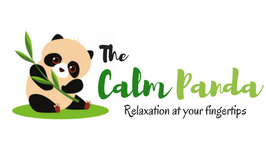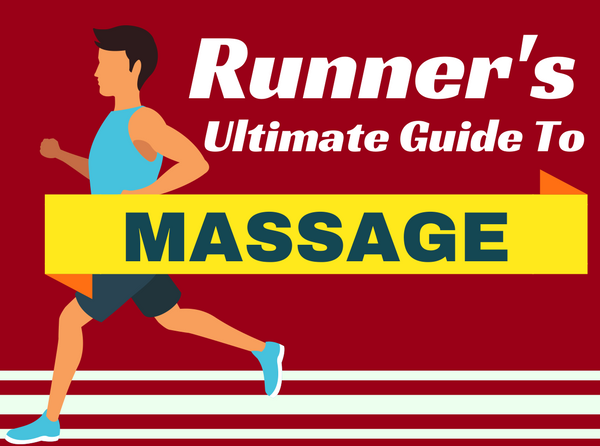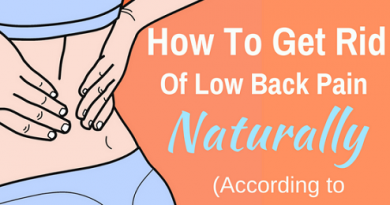A Runner’s Definitive Guide To Massage
Beginners who think running is an easy fat-burner must be warned: It is not for the faint of heart.
While it’s good for our cardio-respiratory system, it is our feet that take all the pounding. The 26 bones, 112 ligaments, 33 joints and a complex network of nerves, muscles, tendons, and blood vessels all work together to keep up with the demands of running.
But even these aren’t enough to totally shield our feet and legs from post-marathon pain.
The American Academy of Podiatric Sports Medicine (AAPSM) explains that the impact force each of our foot receives when we’re running is equivalent to three to four times our body weight. In other words, for a 5K race alone, a 150-pound person’s feet have to withstand as much as 3.5 million pounds (or 1,750 tons) of force!
Not surprisingly, as reported by the Institute for Preventive Foot Health (IPFH) in its 2012 National Health Assessment, 59% of runners in the US reported of sore feet or blisters while 35% described their foot pain at a moderate or high level.
To recover from post-marathon muscle spasms, runners are usually advised to get massage either through a certified therapist or DIY methods. But just how effective it is?
In this in-depth guide, we’ll explore the latest scientific studies about massage for runners and the different ways to apply it.

What Are The Benefits Of Massage For Runners?
Massage in and of itself won’t help you win a race. However, when you incorporate it into a holistic training and recovery program, massage can help enhance your running performance.
A 2005 study published in the Athletic Therapy Today explores how massage can benefit an athlete psychologically and physiologically.
The mental benefits of massage are due to its relaxing effect that extends to every major muscle and organ of the body. As a result, an athlete’s pre-running anxiety is reduced, creating a mental readiness that helps him focus more on visualization.
This is corroborated by a study wherein 30 women from English East Midlands reported that a pre-event massage had a positive impact on their performance and how they perceived physical symptoms.
As for its physiological effect, massage is known for stimulating blood flow, increasing the amount of oxygenated and nutrient-rich blood in muscles involved in running. This is true for both pre- and post-event massage.
Massage also reduces pain by releasing tension and tightness from the muscle tissues.
The muscles are connected to bones via tendons while the bones are connected to each other through ligaments. Hence, by reducing muscle tension, massage can prevent a domino effect that can ultimately lead to reduced mobility or worse, career-ending injury.
In one study, 25 athletes who participated in Tor des Geants (a 330-km international ultramarathon race) experienced reduced pain and muscle spasms after receiving massage. A similar study, this time involving 74 Ironman triathlon athletes with thigh pain, discovered that those who received massage reported lower scores on the pain scale than those who didn’t.
When Should A Runner Receive A Massage?
For the sake of simplicity, we’ll discuss three phases of massage for runners: pre-event, post-event, and maintenance massage. However, the frequency and intensity of massage may vary as there’s no one-size-fits-all approach that can cater to each runner’s unique needs.
The pre-event massage is given at least 30 to 45 minutes before a running event. The goal of this massage is to provide relaxation and condition the runner’s muscles for the demanding activity ahead.
The massage involves short, light, and rhythmic movements that ideally last for up to 20 minutes. Deep tissue massage is avoided because the muscles won’t have sufficient time to recover.
Deep massage is likewise not recommended for post-event massage. Think of massage as a type of workout that expends muscle energy. Therefore, applying massage immediately after a marathon or any running event is literally adding insult to injury.
A runner’s body produces acidic byproducts–among them the lactic acid–after an event. The lactic acid naturally moves out of the muscles and into the bloodstream for elimination.
But when a post-event massage is given prematurely, it impedes blood flow and blocks the lactic acid, causing prolonged muscle soreness in the process.
The link between massage and lactic acid is supported by a 2010 scientific study published in the peer-reviewed journal of the American College of Sports Medicine.
So, when is the ideal time to give or receive a post-event massage?
According to Dr. Lewis G Maharam, a published author and sports health expert widely known as Running Doc™, it’s at least 2 hours after finishing a race. This time frame is long enough for the acidic byproducts to be eliminated or at least buffered to a neutral pH.
Unlike in pre-event massage, the goal of post-event massage isn’t only to relax muscles but also to boost the recovery process. This is done through longer and slower strokes that help release any tension or tightening in the muscles.
When the runner is in a maintenance phase, deep tissue massage is permitted because it’s done during the off-season, giving the muscles time to recover. Maintenance massage also lasts longer (30 to 60 minutes) than the pre-event and postevent massage, and is done weekly or every other week, depending on the runner’s preference and needs.
Remember, it’s essential to stick to a specific schedule because the tissues derive the most benefits from regular massage.
What Are The Best Types Of Massage For Runners?
There’s no single type of massage that works for all runners. As discussed in the previous section, runners with different needs and at different periods of the training program require various types of massage.
For example, deep tissue massage may be applicable during off seasons when runners have ample time to recover but not before or after a running event during which a milder, shorter, and more relaxing type of massage like Swedish is more suitable.
The key in choosing the right massage is a combination of timing and listening to one’s body signals. If you want more control over the intensity of the massage, hands-on self-massage or the use of low-cost tools like massage sticks and foam rollers may give you better results.
However, runners who are prone to severe muscle tension or tightening will likely find a professional sports massage as a better investment.
Although a bit more expensive (massage therapy has an average hourly cost of $65 according to American Massage Therapy Association in 2014), sports massage given by a pro is designed to relieve muscle tension down to its very core, something that is more difficult, if not impossible, to achieve with a DIY massage.
Whether you choose to hire a therapist or self-administer the massage, it’s important to follow the specific guidelines for each type as well as listen to your body’s needs to determine the frequency and intensity of the massage.
Sports Massage For Runners.

“Sports massage” usually conjures up images of a massage therapist working on an athlete’s deep tissues. However, there are also other modalities under this category you might not be aware of.
If you’re about to sign up a massage therapist as part of your training and recovery program, knowing these professional massage modalities will help you become an active collaborator:
Deep Tissue Massage.
Hard training segments are physically taxing for runners. It is during these intense training sessions when they tend to stretch their muscles to the limit, leading to pain and scar tissue.
To address these invisible injuries, massage therapists often recommend deep tissue massage. This modality involves both the superficial and deeper layers of muscles and fascia (i.e., the thin layer of connective tissue covering the muscles, joints, and bones).
Most people associate deep tissue massage with deep pressure, and rightly so. It’s like a Swedish massage but with deeper pressure in order to release the muscle tension or “knots” that most runners are familiar with.
And because it focuses more on the entire muscle and less on a particular trouble spot, deep tissue massage is ideally given when a runner is training a lot but doesn’t suffer from any specific injury.
Aside from relieving stress and lowering blood pressure, deep tissue massage has also been found to be effective in reducing pain related to plantar fasciitis as well as improving mobility in people with scar tissue.
Active Release Technique (A.R.T.)
The more often you run, the more vulnerable you become to having scar tissues. These thickened or tightened layer of tissues usually results either from a sudden tear or overuse injury.
Either way, a scar tissue or adhesion impedes blood flow, reduces range of motion, and negatively affects your performance.
This is when Active Release Technique (A.R.T.) comes to the picture. Developed in the 1980’s by Dr. Michael Leahy, A.R.T. combines repetitive movement-based massage and trigger point therapy to restore the muscle’s form and function.
As its acronym suggests, this technique is an art form in itself. It takes a knowledgeable and highly trained therapist to find scar tissues or adhesions that would have been practically invisible to the untrained eyes.
A.R.T. is ideal for both training and injured runners.
By breaking up dense scar tissues, A.R.T. can help runners recover from sciatica, headaches, plantar fasciitis, and shin splints, among others. Its movement-based massage also helps improve flexibility and therefore prevent muscle tightening, a seemingly innocuous symptom that can potentially lead to major injuries.
A.R.T. is recommended for training runners at least twice a month. Injured athletes, meanwhile, may require close monitoring of a therapist to ensure the right techniques are applied without exacerbating the injury.
Swedish Massage.
Swedish is what you get from a therapist if you prefer a light, relaxing massage. The superficial strokes may not be designed to break up adhesions or scar tissues, but they’re still an essential part of sports massage.
This type of massage is ideally given prior to a running event, a time when an athlete feels the most tension. Swedish provides relaxation to help a runner focus and manage anxiety.
Trigger Point Therapy.
Just like A.R.T., trigger point therapy specifically targets painful areas of the muscles.
These sore spots, also called muscle knots, usually start as strained muscles that irritate nerves, triggering a neurological response that eventually leads to muscles in a constant state of contraction.
Imagine placing your finger on top of a candlelight. The heat activates your nervous system which then triggers muscle contraction to put your hand away from the stimulus. The same principles work for runner’s muscles–only this time there’s no way for them to move away from the pain, hence the continuous contraction.
Trigger point therapy applies deep pressure to loosen these muscle knots. It’s a treatment of choice for runners suffering from IT band tightness, hamstring injuries, and calf strains.
While you can do it on your own using homemade or commercial tools, a consultation with a sports physician provides better results, especially if you still haven’t recovered after using a DIY solution for two weeks.
Depending on the gravity of your condition, a physician may refer you to a physical therapist who can perform soft tissue release or even electrical stimulation to relieve your trigger points.
Self-Massage for Runners.
In between sessions with a massage therapist, your body will definitely crave for a therapeutic touch. For this reason, it’s important to learn about self-massage techniques so you can pamper yourself without a therapist constantly on your side.
Self-massage is of two types: active and passive.
The techniques listed below are active types, which means you do the massage on your own either with your hands or with the help of cheap tools like a golf ball, foam roller, or a massage stick.
Passive type, on the other hand, is an almost hands-off approach to self-massage that is gaining popularity among athletes. All you need to do is click a few buttons and let the machine deliver a pre-programmed massage for you.
Electric massagers for runners vary in terms of size and price. Massage chairs are mostly high-end products that provide full-body massage. If you prefer automatic massagers for the lower body, a foot massager or a more sophisticated foot and calf massager may suit your needs.
Not overdoing it is the key for a good self-massage. Our muscles are very sensitive so prolonged, excessive pressure may not give them enough time to release tension. As a rule of the thumb, massage a specific area for not more than 10 to 15 minutes.
If you’re using tools like sticks or foam rollers, don’t forget to evaluate the sore spots using your hands from time to time to check how the muscles are responding to the treatment.
Finally, always remember that the goal of self-massage is to complement professional services. If the muscles are too painful and no longer receptive to your own strokes, it’s more than likely that you already need a therapist’s touch.

Basic Self-Massage.
Nothing beats the convenience of using your own hands to massage your feet and legs.
You can either choose pre-marathon massage techniques if you want to condition your muscles and prevent injury or post-marathon massage techniques to assist in the recovery process.
For pre-event self-massage, Ian Harvey knows what to recommend. A massage therapist and founder of the popular YouTube channel Massage Sloth, Harvey also runs in marathons.
In the video below, he shares a 7-step process that roughly takes only 20 seconds and includes the following steps:
Step 1: Put your socks on. Slightly bend your thumbs and make a claw-like grip. Massage the bottom of the foot, twisting your wrist to direct the pressure on the thumbs without tiring them. This massage loosens up foot muscles and warms up the plantar fascia, the connective tissue that usually bears the brunt of running.
Step 2: Grab the toes and ball of the foot with your one hand and grip the ankle to create a tourniquet with the other. Rotate the ball of the foot in both directions as you hold the ankle firmly. It’s a good way to compress and loosen up the Achilles tendon, a usual site of injury for many runners.
Step 3: Grab the ankle once again, this time with both hands in a claw-like grip. Firmly grip the ankle to create a tourniquet before you rotate the hands in opposite directions.
Step 4: Hook your fingers into the meaty part of the shin. Slightly lean back to direct the pressure from your weight to the fingers, allowing them to massage the legs from ankle to knee.
Step 5: Knead the back of your calf with both hands. Finish it off by rubbing either side of the kneecap with your palms.
Post-event self-massage, meanwhile, is an easy way to speed up your recovery. It involves almost the same muscles but sometimes may require the use of other tools to massage areas that would otherwise be difficult to reach with your hands.
The video below from Runner’s World, for instance, requires both of your hands and a small, handy ball like a tennis ball.
Step 1: Hamstrings (behind the thigh) – Sit down on the floor with one leg bent. Massage the back of the thigh by creating small circles with your fingers. Hold it in areas that are particularly sore. Apply gentle pressure as you breathe deeply.
Step 2: Quadriceps (front of the thigh) – While sitting in a chair, press your forearm against your thigh and slowly run it down the entire length of the quads.
Step 3: Calves (leg muscles) – Rest your one foot on a chair. Massage the back of your lower leg using the back of your hand. Apply the same strokes to the inner and outer portions of your leg muscles. Then, squeeze up the back of lower leg with your thumbs. Finally, make small circles with your thumbs and run it along the same part of the lower leg.
Step 4: Soles of the feet – Roll a small ball (tennis, golf, or lacrosse) under your feet, giving special attention to the space between the toes, the foot arch, and the area between the heel and the toes.
Step 5: Iliotibial band (lateral aspect of the knee) – A common injury among runners, the iliotibial band syndrome can be managed post-marathon using cross-friction massage. With the palmar side of your fingers, gently rub and massage the length of your legs, paying special attention to the area where the IT band crosses the outer knee.
Step 6: Piriformis (buttock) – Sit on a bouncy ball or tennis ball, placing it just outside of your sitting bone. Support your weight with your hands. Roll the ball until you find a trigger point or sore spot where you should apply more pressure.
The Golf/Tennis Ball Technique.
The use of a golf or tennis ball as a massage tool is a great alternative for runners whose thumbs are either injured or too tired for a hands-on massage.
Because it’s lightweight and very easy to control, a golf or tennis ball can be used almost anywhere in the body–whether it’s a painful foot due to plantar fasciitis or tender trigger points of the piriformis (buttock).
Here’s a simple step-by-step guide on how to use the golf/tennis ball technique:
Step 1: Sit in a chair. Take off your shoes and socks and place a golf or tennis ball under your foot. If there’s inflammation anywhere in the sole of the foot, freezing the ball beforehand is recommended.
Step 2: Roll the ball under the foot in a long, continuous motion. Massage the entire length of the foot from the toes and ball of the foot to the arch and heels. If you find a tender spot, directly apply pressure to it for at least 15 to 20 seconds.
Step 3: Sit on the ball to release trigger points in other hard-to-reach areas such as hips and buttocks.
Massage Rollers For Runners.
If you’re looking for a deeper massage with a wider coverage, foam rollers may be right up your alley.
Foam or massage rollers are small, firm, and cylindrical tools where you roll your sore muscles over. It’s like having a deep tissue massage, only this time you have complete control over how deep and long the massage will be.
Also called self-myofascial release therapy, it provides the pressure needed to release adhesion that limits a runner’s movements. The adhesion occurs if injuries either to muscles or connective tissues covering them (i.e., fascia) fail to heal.
By releasing these muscle knots, foam rollers can help improve a runner’s flexibility and muscle performance.
Massage rollers have always been part of a runner’s warm-up and cool-down routines. In fact, between regular stretching and foam rollers, the latter has been shown to improve an athlete’s performance better than the former. Some research went so far as to suggest stretching can reduce a runner’s speed, strength endurance, and reaction time.
In a 2015 study published in International Journal of Sports Physical Therapy, the use of foam rollers increased the subjects’ joint range of motion as well as muscle performance before and after an exercise. Although foam rollers can increase a runner’s flexibility and muscle performance, more evidence is needed to prove its effect on muscle recovery.
In terms of density, there’s a variety of massage rollers that can provide varying levels of pressure. There are low-density foam rollers for beginners and high-density foam rollers for those who prefer a slightly firmer massage.
Textured surface foam rollers, meanwhile, feature bumps or grids on the surface that deliver more pressure when they come in contact with your muscles. Lastly, a vibrating foam roller complements deep pressure with vibrating actions to relieve muscle soreness.
To learn how to use a foam roller, this guide by Runner’s World will teach you the basics.
As for the frequency and duration of use that bring the best results for runners, the scientific community hasn’t come up with an ideal range yet. However, existing literature suggests that 3-5 sets with 20-30 repetitions each and performed regularly for at least 3-5 times a week may contribute to a runner’s long-term flexibility.
Massage Stick For Runners.
Massage sticks are malleable plastic tools that deliver shallow to medium pressure.
In contrast to massage rollers, you will rely on your arm strength instead of your weight when using a massage stick. Hence, this may not suit runners who have conditions that impair their hand or arm mobility.
In terms of portability, however, massage sticks win hands down. They are relatively smaller and lighter compared to foam rollers so they’re not awkward to use and carry around when you’re traveling.
To use a massage stick, simply grip both ends and rub the tool across the length of your calf, hamstrings, IT band, or quads. It works the same way as a foam roller, but the difference is how you apply the pressure.
Continue massaging your muscles and learn how to read your body signals to determine when to stop. You can do this by occasionally evaluating how your muscles are responding to the pressure.
Remember, self-massage should only complement a professional’s touch and too much pain may already be a sign for you to step back and let the therapist do his job.




